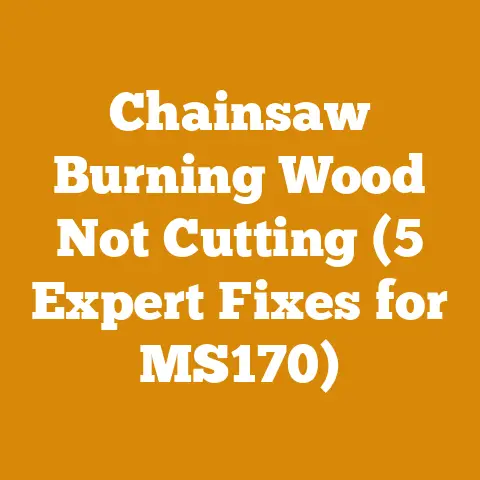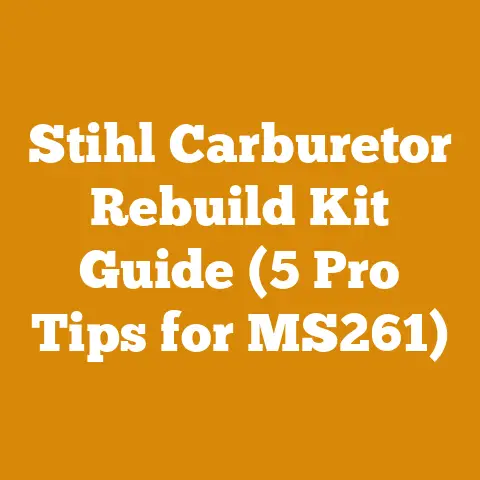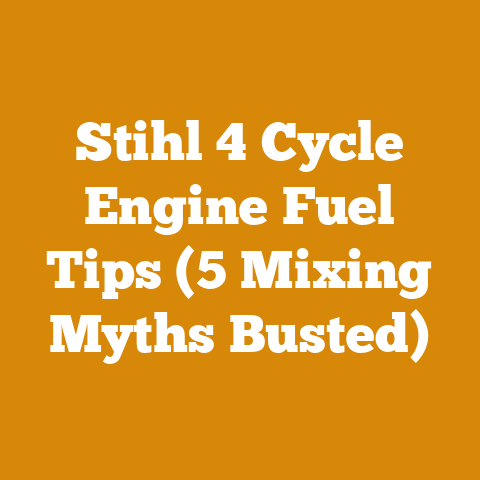Battery Lawn Mower Ratings for Wooded Lawns (Top Self-Propelled Picks)
Imagine gliding across your lush, wooded lawn, the scent of freshly cut grass mingling with the earthy aroma of the surrounding trees.
No fumes, no tangled cords, just effortless power and quiet efficiency.
That’s the promise of a high-end, self-propelled battery lawn mower, a true luxury for those of us who value both our lawns and our peace of mind.
But which model reigns supreme when navigating the unique challenges of a wooded landscape?
This article delves deep into the realm of battery-powered lawn care, focusing on the top self-propelled picks specifically designed for the demands of a lawn nestled amongst the trees.
We’ll explore ratings, performance, and, most importantly, the costs associated with achieving that perfectly manicured, eco-conscious lawn.
Battery Lawn Mower Ratings for Wooded Lawns: Top Self-Propelled Picks
Maintaining a lawn surrounded by trees presents a unique set of challenges.
Fallen leaves, uneven terrain, and tight corners demand a mower that’s not only powerful but also highly maneuverable and durable.
While gas-powered mowers have traditionally been the go-to choice for demanding landscapes, battery-powered technology has advanced significantly in recent years, offering comparable performance with added benefits like reduced noise, zero emissions, and lower maintenance.
This article will explore the top self-propelled battery lawn mowers specifically chosen for their ability to tackle wooded lawns.
We’ll delve into their features, performance, and, crucially, the costs associated with ownership and operation.
Understanding the Challenges of Wooded Lawns
Before diving into specific models, it’s crucial to understand the unique demands of a wooded lawn.
These lawns typically feature:
- Uneven Terrain: Tree roots and natural undulations in the ground create an uneven surface that requires a mower with excellent traction and suspension.
- Tight Spaces: Navigating around trees, shrubs, and other obstacles demands a mower with excellent maneuverability.
- Leaf Litter: Fallen leaves can quickly accumulate, requiring a mower with a powerful mulching or bagging system.
- Damp Conditions: Shaded areas under trees often retain moisture, increasing the risk of rust and corrosion.
- Variety of Grass Types: Wooded lawns often feature a mix of grass types, some more shade-tolerant than others, requiring a mower capable of handling different cutting heights and densities.
Key Features to Look for in a Battery Lawn Mower for Wooded Lawns
When selecting a battery lawn mower for a wooded lawn, consider the following features:
- EGO Power+ LM2135SP: This mower is consistently ranked among the best battery-powered options for its power, performance, and durability.
It features a 56V battery, a 21-inch steel deck, and a self-propelled drive system with variable speed control.
It also offers mulching, bagging, and side discharge options. - Greenworks Pro 80V 21-Inch Self-Propelled Lawn Mower: This mower boasts an 80V battery for exceptional power and runtime.
It features a 21-inch steel deck, a self-propelled drive system, and mulching, bagging, and side discharge capabilities. - Ryobi 40V HP Brushless 21-inch Self-Propelled Mower: This mower offers a good balance of power, performance, and value.
It features a 40V battery, a 21-inch steel deck, and a self-propelled drive system.
It also offers mulching, bagging, and side discharge options. - Milwaukee M18 FUEL™ 21″ Self-Propelled Dual Battery Mower: This mower is designed for professional use and offers exceptional power and durability.
It features a dual-battery system that provides extended runtime, a 21-inch steel deck, and a self-propelled drive system. - Toro Recycler 60V Max* 22″ SmartStow® Personal Pace® Self-Propelled Mower: This mower features Toro’s Personal Pace® self-propelled system, which automatically adjusts the mowing speed to match your walking pace.
It also offers mulching, bagging, and side discharge options.
Detailed Comparison of Top Picks
To help you make an informed decision, let’s take a closer look at each of these mowers, comparing their key features and specifications:
Note: Run times are estimates and can vary depending on grass conditions, terrain, and operator speed.
The Cost of Battery Lawn Mower Ownership: A Detailed Breakdown
Now, let’s delve into the financial aspect of owning a battery-powered lawn mower.
Understanding the costs involved is crucial for making an informed decision and budgeting effectively.
I’ve found that many people underestimate the total cost of ownership, focusing solely on the initial purchase price.
The cost of owning a battery lawn mower can be broken down into several categories:
- Initial Purchase Price: This is the most obvious cost and includes the mower itself, the battery (if not included), and the charger (if not included).
- Battery Replacement: Batteries have a limited lifespan and will eventually need to be replaced.
The cost of a replacement battery can range from $100 to $400 or more, depending on the voltage and capacity. - Charger Replacement: While less common than battery replacement, chargers can also fail and need to be replaced.
The cost of a replacement charger can range from $50 to $150. - Maintenance Costs: Battery lawn mowers require less maintenance than gas-powered mowers, but they still need some attention.
This includes cleaning, blade sharpening, and occasional lubrication.
I typically budget around $20 – $50 per year for these expenses. - Repair Costs: While battery lawn mowers are generally reliable, they can still break down and require repairs.
The cost of repairs can vary depending on the nature of the problem and the availability of parts.
I always recommend setting aside a small emergency fund for unexpected repairs. - Electricity Costs: Charging the battery requires electricity, which will add to your utility bill.
The cost of electricity will vary depending on your location and usage habits. - Storage Costs: If you don’t have a garage or shed, you may need to pay for storage space.
This can be a significant cost, especially in urban areas.
Data-Driven Cost Analysis: A Hypothetical Example
To illustrate the cost of battery lawn mower ownership, let’s consider a hypothetical example.
Suppose you purchase an EGO Power+ LM2135SP for $700.
Here’s a breakdown of the estimated costs over a 5-year period:
- Initial Purchase Price: $700
- Battery Replacement (after 3 years): $250
- Maintenance Costs (5 years x $30/year): $150
- Electricity Costs (5 years x $10/year): $50
- Total Cost of Ownership (5 years): $1150
This translates to an average annual cost of $230.
Cost Optimization Strategies
While the cost of battery lawn mower ownership can be significant, there are several ways to optimize your budget:
- Choose a Reputable Brand: Investing in a high-quality mower from a reputable brand can reduce the risk of breakdowns and extend the lifespan of the battery.
- Proper Battery Care: Following the manufacturer’s recommendations for battery charging and storage can significantly extend the battery’s lifespan.
Avoid overcharging or deep discharging the battery. - Regular Maintenance: Performing regular maintenance, such as cleaning and blade sharpening, can prevent minor problems from escalating into major repairs.
- Shop Around for Batteries: When it’s time to replace the battery, shop around for the best price.
Online retailers often offer better deals than local stores. - Consider a Refurbished Mower: Purchasing a refurbished mower can save you money on the initial purchase price.
Just be sure to buy from a reputable source that offers a warranty. - Take Advantage of Sales and Discounts: Keep an eye out for sales and discounts on battery lawn mowers.
Many retailers offer seasonal promotions and clearance sales.
The Environmental and Health Costs of Gas-Powered Mowers
While this article focuses on the financial costs of battery lawn mowers, it’s important to also consider the environmental and health costs of gas-powered mowers.
Gas-powered mowers are a significant source of air pollution, emitting harmful greenhouse gases and other pollutants that contribute to climate change and respiratory problems.
According to the Environmental Protection Agency (EPA), lawn and garden equipment, including gas-powered mowers, account for approximately 5% of all air pollution in the United States.
A single gas-powered mower can emit as much pollution in one hour as 11 cars.
In addition to air pollution, gas-powered mowers also produce significant noise pollution, which can be disruptive to neighbors and harmful to hearing.
Battery-powered mowers, on the other hand, produce zero emissions and are significantly quieter than gas-powered mowers.
By switching to a battery-powered mower, you can reduce your environmental impact and improve your health.
Understanding Battery Technology and Performance
The heart of any battery-powered lawn mower is, of course, the battery itself.
Understanding the different types of battery technology and their performance characteristics is crucial for making an informed purchase.
The most common type of battery used in battery lawn mowers is the lithium-ion (Li-ion) battery.
Li-ion batteries offer several advantages over older battery technologies, including:
- High Energy Density: Li-ion batteries can store a large amount of energy in a relatively small and lightweight package.
- Long Lifespan: Li-ion batteries can last for several years with proper care.
- Fast Charging: Li-ion batteries can be charged relatively quickly.
- Low Self-Discharge: Li-ion batteries lose very little charge when not in use.
However, Li-ion batteries also have some disadvantages:
- Higher Cost: Li-ion batteries are more expensive than older battery technologies.
- Temperature Sensitivity: Li-ion batteries can be damaged by extreme temperatures.
- Limited Lifespan: Li-ion batteries have a limited lifespan and will eventually need to be replaced.
Battery Voltage and Amp-Hours
Two key specifications to consider when evaluating battery performance are voltage (V) and amp-hours (Ah).
- Voltage: Voltage is a measure of the battery’s electrical potential.
Higher voltage batteries generally provide more power. - Amp-Hours: Amp-hours is a measure of the battery’s capacity, or how much energy it can store.
Higher amp-hour batteries provide longer runtime.
When choosing a battery lawn mower, consider both the voltage and amp-hours of the battery.
A higher voltage battery will provide more power, while a higher amp-hour battery will provide longer runtime.
Battery Charging and Maintenance Tips
To maximize the lifespan of your battery, follow these charging and maintenance tips:
- Use the Correct Charger: Always use the charger that is specifically designed for your battery.
Using the wrong charger can damage the battery. - Avoid Overcharging: Once the battery is fully charged, unplug the charger.
Overcharging can damage the battery. - Avoid Deep Discharging: Avoid letting the battery completely discharge.
Deep discharging can shorten the battery’s lifespan. - Store the Battery Properly: Store the battery in a cool, dry place.
Avoid storing the battery in extreme temperatures. - Clean the Battery Terminals: Clean the battery terminals periodically to remove any corrosion.
Case Studies: Battery Lawn Mowers in Action on Wooded Lawns
To further illustrate the performance of battery lawn mowers on wooded lawns, let’s consider a few case studies:
Case Study 1: The Leafy Suburban Lot
- Location: Suburban neighborhood with a large, wooded lot.
- Challenge: Heavy leaf litter in the fall, uneven terrain, and tight spaces around trees.
- Solution: EGO Power+ LM2135SP.
- Results: The EGO mower easily handled the leaf litter and uneven terrain.
The self-propelled drive system made it easy to navigate around trees.
The homeowner was impressed with the mower’s power and runtime.
Case Study 2: The Shady Backyard Oasis
- Location: Residential property with a small, shady backyard.
- Challenge: Damp conditions, limited sunlight, and a variety of grass types.
- Solution: Ryobi 40V HP Brushless 21-inch Self-Propelled Mower.
- Results: The Ryobi mower performed well in the damp conditions and handled the different grass types with ease.
The homeowner appreciated the mower’s lightweight design and maneuverability.
Case Study 3: The Sprawling Rural Estate
- Location: Rural estate with a large, sprawling lawn.
- Challenge: Large area to mow, uneven terrain, and thick grass.
- Solution: Milwaukee M18 FUEL™ 21″ Self-Propelled Dual Battery Mower.
- Results: The Milwaukee mower provided the power and runtime needed to mow the large lawn.
The dual-battery system allowed the homeowner to mow the entire lawn on a single charge.
The homeowner was impressed with the mower’s durability and performance.
These case studies demonstrate that battery lawn mowers can be a viable option for a variety of wooded lawn environments.
Budgeting for Wood Processing and Firewood Preparation: A Complementary Skill
As someone who appreciates the benefits of a well-maintained lawn, I also understand the value of wood processing and firewood preparation.
In fact, the two often go hand-in-hand.
Trimming trees and clearing brush from your wooded lawn can generate a significant amount of wood that can be used for firewood, landscaping, or other projects.
Budgeting for wood processing and firewood preparation is a skill that complements lawn care and can save you money in the long run.
Here’s a brief overview of the costs involved:
- Chainsaw: A good quality chainsaw is essential for cutting firewood.
The cost of a chainsaw can range from $100 to $1000 or more, depending on the size, power, and features. - Log Splitter: A log splitter can make splitting firewood much easier and faster.
The cost of a log splitter can range from $200 to $3000 or more, depending on the type and capacity. - Safety Gear: Safety gear, such as a helmet, ear protection, and eye protection, is essential for safe wood processing.
The cost of safety gear can range from $50 to $200. - Fuel and Oil: Chainsaws and log splitters require fuel and oil to operate.
The cost of fuel and oil will vary depending on your usage habits. - Storage: You’ll need a place to store your firewood.
A woodshed or tarp can provide adequate protection from the elements.
The cost of storage will vary depending on your needs.
By budgeting for wood processing and firewood preparation, you can save money on heating costs and add value to your property.
Global Timber Prices and Firewood Market Rates: A Broader Perspective
Understanding global timber prices and firewood market rates can provide a broader perspective on the value of wood processing and firewood preparation.
Timber prices vary widely depending on the species, quality, and location.
According to the Food and Agriculture Organization of the United Nations (FAO), global timber prices have been increasing in recent years due to increased demand and limited supply.
Firewood market rates also vary depending on the location and the species of wood.
According to the U.S.
Energy Information Administration (EIA), the average price of firewood in the United States is around $250 per cord.
By understanding global timber prices and firewood market rates, you can make informed decisions about wood processing and firewood preparation.
Actionable Takeaways and Next Steps
Choosing the right battery lawn mower for your wooded lawn is an investment that can significantly improve your lawn care experience.
By considering the challenges of wooded lawns, the key features to look for in a battery lawn mower, and the costs associated with ownership, you can make an informed decision and budget effectively.
Here are some actionable takeaways and next steps:
- Assess Your Lawn: Take a close look at your lawn and identify the specific challenges you need to address.
- Research Different Models: Research different battery lawn mower models and compare their features, performance, and prices.
- Read Reviews: Read reviews from experts and other users to get a better understanding of the mower’s performance in real-world conditions.
- Consider Your Budget: Determine your budget and choose a mower that fits your needs and your budget.
- Visit a Local Retailer: Visit a local retailer to see the mower in person and ask questions.
- Take Advantage of Sales and Discounts: Keep an eye out for sales and discounts on battery lawn mowers.
- Invest in Proper Maintenance: Follow the manufacturer’s recommendations for battery charging and storage to maximize the lifespan of your battery.
By following these steps, you can choose the right battery lawn mower for your wooded lawn and enjoy a beautiful, eco-conscious lawn for years to come.
Remember that the initial investment in a quality battery mower is an investment in your time, your health, and the environment.
It’s a commitment to a quieter, cleaner, and more sustainable way to care for your lawn.
And who knows, maybe you’ll even find some new uses for all that extra wood!






